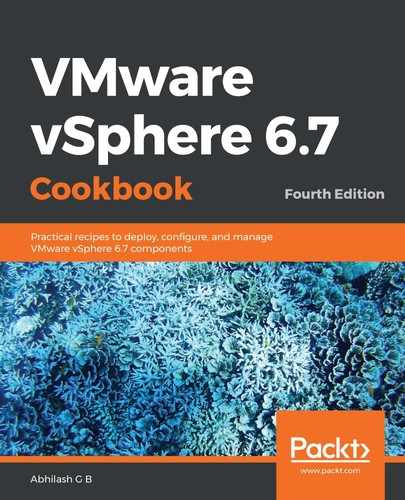Book Description
Proven, actionable ways to install, manage, secure and monitor your vSphere 6.7 environments
Key Features
- Get up to speed with the installation and life cycle management of a vSphere 6.7 environment, using a task-based approach
- Secure your vSphere environment using SSL Certificates
- Get introduced to the tools that are used to monitor the performance of the vSphere Environment
Book Description
VMware vSphere is the most comprehensive core suite of SDDC solutions on the market. It helps transform data centers into simplified on-premises private cloud infrastructures. This edition of the book focuses on the latest version, vSphere 6.7.
The books starts with chapters covering the greenfield deployment of vSphere 6.7 components and the upgrade of existing vSphere components to 6.7. You will then learn how to configure storage and network access for a vSphere environment. Get to grips with optimizing your vSphere environment for resource distribution and utilization using features such as DRS and DPM, along with enabling high availability for vSphere components using vSphere HA, VMware FT, and VCHA. Then, you will learn how to facilitate large-scale deployment of stateless/stateful ESXi hosts using Auto Deploy. Finally, you will explore how to upgrade/patch a vSphere environment using vSphere Update Manager, secure it using SSL certificates, and then monitor its performance with tools such as vSphere Performance Charts and esxtop.
By the end of this book, you'll be well versed in the core functionalities of vSphere 6.7 and be able to effectively deploy, manage, secure, and monitor your environment.
What you will learn
- Deploy a new vSphere 6.7 environment or upgrade an existing vSphere environment to version 6.7
- Learn how to configure and manage storage and network access for a vSphere environment
- Enable high availability for Hosts, VMs and vCenter Server
- Optimize your vSphere environment for resource distribution/utilization
- Patch or upgrade a vSphere environment using vSphere Update Manager
- Secure vSphere infrastructure components using SSL certificates
- Effectively monitor the performance of your vSphere environment
Who this book is for
If you are a systems administrator, support engineer, or anyone who wants to learn how to install, configure, and manage a vSphere environment in a quick, hands-on manner, then this book is for you. Consultants and infrastructure architects who wish to design and deploy vSphere 6.7 environments will also find this book helpful.
